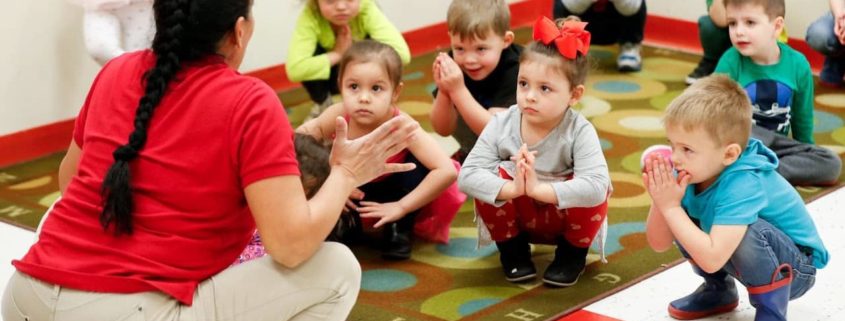When faced with so many educational options and the competing theories behind them, determining how to best educate your children and in which setting can easily overwhelm any parent.
Is traditional schooling the way to go, or should you give the Montessori method a try?
When it comes to Montessori vs. traditional preschool, comparing and contrasting them to make a more informed decision is the best thing to do.
What is a Montessori Preschool?
So, what is a Montessori preschool program? Developed in the early 1900s by Italian educator Dr. Maria Montessori, the Montessori program is quite different from that seen in a traditional educational setting. Dr. Montessori believed that kids learn best when they’re able to choose what they want to learn, and Montessori schools, classrooms, and teaching methods are designed with this child-centered philosophy in mind.
Play-Based vs. Work-Based Learning
Both traditional and Montessori preschools are centered around play, with the major difference being the point of playtime for children in each setting. For instance, traditional preschools allow kids to play in a more unstructured way. The belief behind this choice is that learning can happen through both playing and the social interactions that take place with other children while they play.
On the other hand, play in a Montessori setting is considered a child’s “work” and part of the learning process. In a traditional setting, all sorts of toys may be present, but in a Montessori classroom, the toys available to children primarily help to further the learning process.
Teacher-Oriented vs. Child-Oriented
In a teacher-oriented traditional class, a well-trained professional can help inform and actively guide students to knowledge and understanding directly according to a set schedule. The Montessori classroom setting is more child-oriented, allowing them to discover the world around them and gain knowledge in a more organic, self-paced way.
Montessori classrooms are teacher-guided, with teachers providing materials and activities designed to target certain skills. Nonetheless, students set the pace and make their own discoveries while teachers observe and provide support where needed.
Classroom Environment
Traditional preschool classrooms tend to be more colorful. Toys may be on the floor or haphazardly situated on different shelves of different heights all around the room.
Montessori classrooms are designed to encourage enthusiasm and a love for learning. Classrooms are welcoming, clean, and organized to create fewer distractions so children can focus primarily on their skills.
Class Size Difference
Traditional preschools tend to tolerate higher teacher-to-student ratios, given that traditional preschools often receive high levels of applications. Teachers are nevertheless dedicated to their students, however big the ratio.
Montessori classes usually have a smaller teacher-to-student ratio, where students can receive more one-on-one support. In many cases, there are two teachers or one teacher with at least one assistant in every Montessori classroom.
Group vs. Individual Work
Traditional preschools are, at their core, social environments. Kids play with each other and learn with each other, building relationships that may end up following them into kindergarten, elementary school, and beyond. In a traditional preschool, kids more or less learn the same things at the same time, in the same ways, and are expected to meet the same benchmarks.
Montessori preschools are focused more on individualized learning. There is less overall structure and more freedom for children to learn at their own pace. Likewise, the Montessori setting encourages a more independent mindset and “work” environment. However, students are still encouraged to collaborate and develop vital social skills that they’ll carry throughout their education.
Choose the Perfect Preschool with Cadence Education.
Hopefully, you now have a better idea of what lies in store for kids in a Montessori vs. traditional preschool setting, which can help you make that big educational decision. If the choice still seems daunting, though, Cadence Education is available to help.
Dedicated to promoting your child’s creativity and helping them get a skills-based education, and with hundreds of locations, Cadence Education wants children to be able to think critically, solve problems, and become more independent.
If this sounds appealing to you, get in touch with Cadence Education today to help your children set out on their learning journey and ascend to new educational heights.

